Spacecraft Components
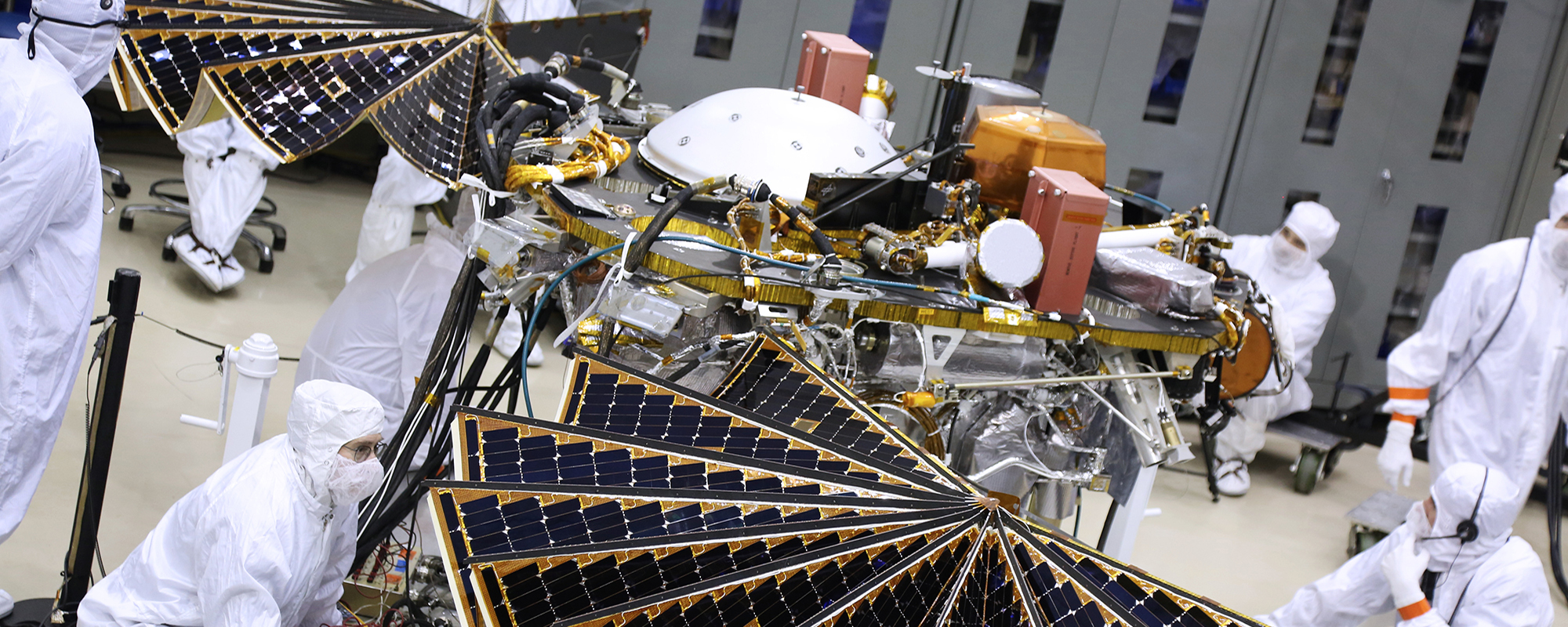
Northrop Grumman is a leading designer, producer and supplier of spacecraft components that power and enable satellites of all classes. Products include spacecraft panels, bus structures, precision optical structures, deployable structural systems and mechanisms, solar arrays and antenna reflectors. Our products are on virtually every U.S. satellite built in the last 20 years.
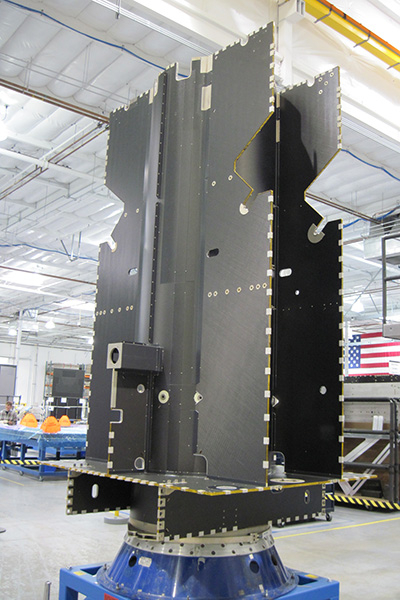
Bus Structures, Towers and Subsystems
Northrop Grumman is a leading designer, producer and supplier of spacecraft components such as composite bus structures, towers, radome structures and subsystems that house flight-critical systems for commercial, civil and government satellites.
Past programs include numerous components for the A2100, Global Positioning System, 702 and Star 2 buses, as well as components for proprietary customers. These essential satellite components feature high strength-to-weight ratios, superior flatness and thermal dimensional stability — factors that are critical in space applications.
Other capabilities include design, manufacture, testing and integration of radome structures, UAV radome structures, antenna production, composite missile components and precision composite structures. Northrop Grumman's expertise and commitment has played a leading role in the technological advancement of composite reflectors, antennas, waveguide, feed elements and related hardware for key commercial and government programs. The company's antenna reflectors are lightweight, high-performance RF components for space and aerospace applications. Radome structures are made of a multi-functional composite structure with high-temperature advanced ceramic material for space and aerospace applications. Missile components are manufactured from multi-layer/multi-material composite structural elements, with mid- to high-temperature applications. For more information on these systems, contact the company's San Diego, California, or Magna, Utah, sites.
Structural Panels
Northrop Grumman has a proven development approach to design-to-performance or build-to-print structural panels for various government, civil and commercial spacecraft customers. These structural panels, including optical solar reflectors, are made using graphite-epoxy/honeycomb. The honeycomb panels have embedded heat pipes, structural and thermal analyses, material selection, panel consolidation, precision machining, panel inserts, reinforcement for locally concentrated loading, application of optical coatings, contamination control, ultrasonic and radiographic testing, thermal performance and cycling testing, static load, vibration, and acoustic testing. This panel design is one of many designed to fit customers' needs. With more than 20 years of experience designing and manufacturing composite flight hardware, we have a range of products and design capabilities suited to meet customer-specific needs.
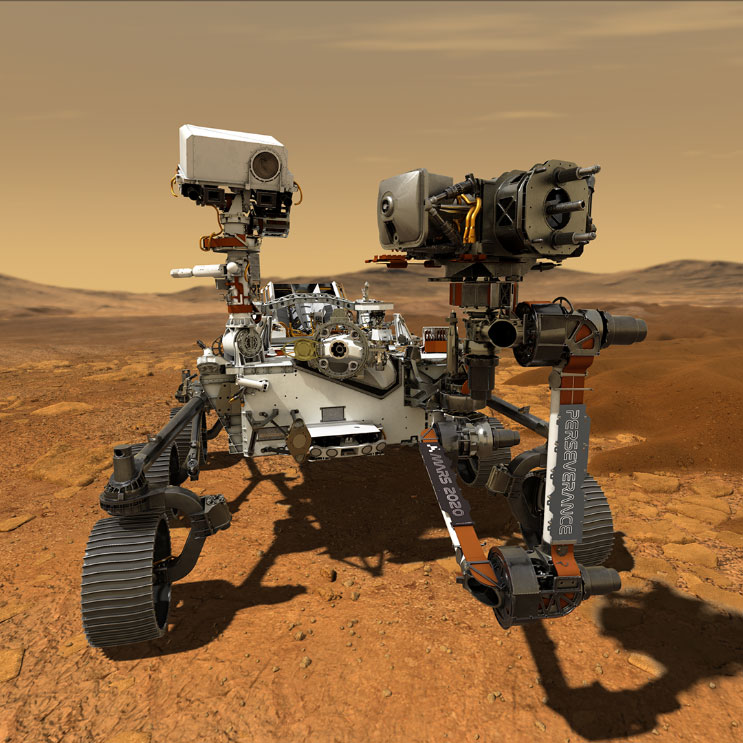
Precision Optical Structures
Northrop Grumman's composite optical-support structures perform with uncompromising precision in cryogenic temperatures, providing spacecraft telescopes and imaging systems the stability required for unprecedented astronomical observations.
These precision optical structures are critical components of the Hubble Space Telescope, the Chandra X-ray Observatory, the James Webb Space Telescope, the Mars Exploration Rovers and the Space Tracking and Surveillance System, part of America's missile defense architecture. They also housed the imaging equipment aboard NASA's Deep Impact mission, which captured data from the spacecraft as it collided with the comet Tempel 1 and transmitted it back to Earth for study in real time.
Northrop Grumman's capabilities include design, manufacturing and testing of the various precision optical structures. We provide a variety of products and services, including composite telescope and metering structures, composite mirrors and radiometers, distortion testing and aero-capture reentry vehicles. Northrop Grumman's expertise and commitment has played a leading role in the technological advancement of precision optical structures and related hardware for key commercial and government programs.

Common Space Vehicle Mechanisms
Actuators at a Glance
Northrop Grumman has been delivering space mechanisms for stowing and articulating spacecraft payloads and solar arrays for 40+ years with 100% mission success and our modular actuators are represented on over 50 missions.
Our designs specialize in:
- Long-life or high-use missions
- Low disturbance (induced vibrations reduced for simultaneous operation of payloads)
- Precision pointing (higher altitude missions)
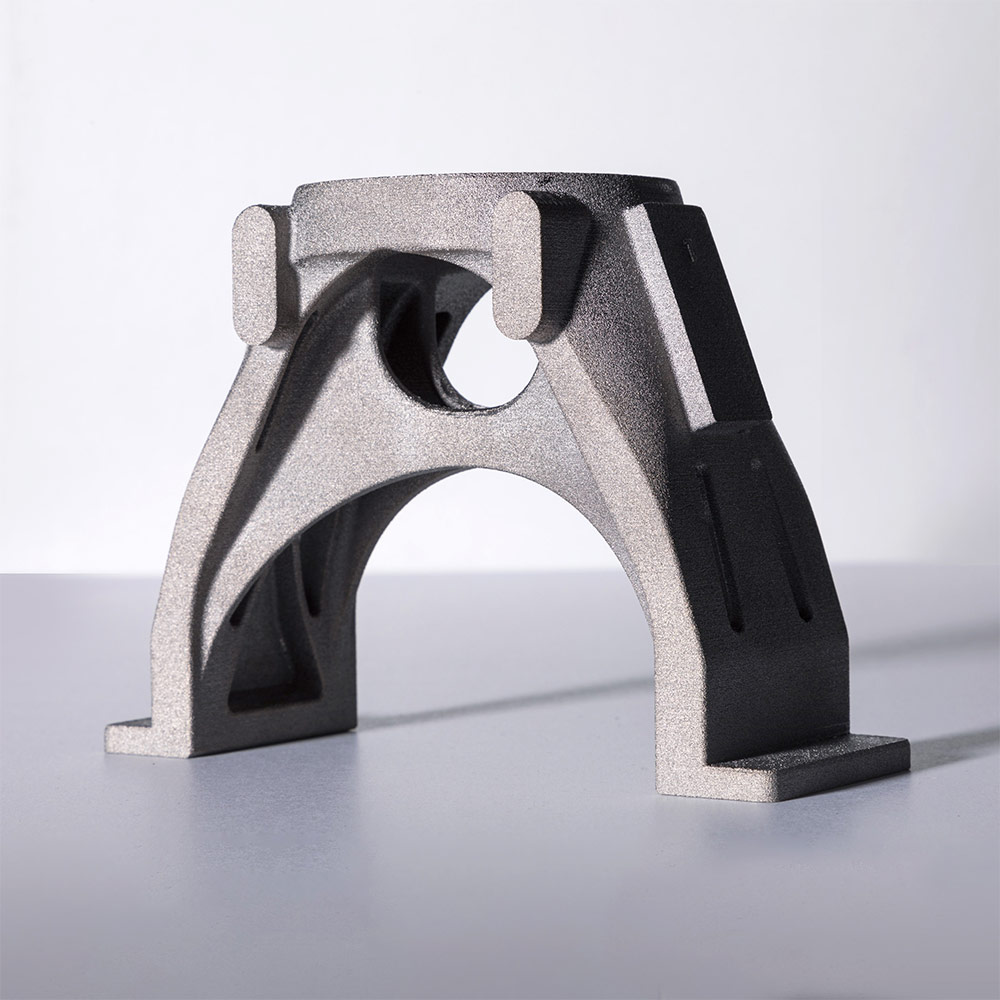
Space Systems Additive Manufacturing
Northrop Grumman has been defining possible with additive manufacturing (AM) for over 20 years. Leveraging diverse processes and metallic materials, our additive manufacturing offers significant advantages:
- Enhanced design flexibility
- Consolidated parts
- Improved performance
- Up to 70% cost reduction
- Up to 90% reduction in lead time
Deployables
Northrop Grumman is the satellite industry's premier source for mission-enabling, space-qualified deployable booms, masts and backing structures for commercial, military, civil and scientific space programs.
The company has consistently met the challenge to develop deployable solutions for a broad range of large space structure applications, from global mapping and communication antennas and space telescopes to high-sensitivity instrumentation such as particle detectors and magnetometers. With decades of experience in all types of deployable spaceflight structures, Northrop Grumman can quickly devise and deliver an optimal, lowest-risk solution.
We deliver systems that deploy linear panel arrays, membrane surfaces and discrete elements to stringent accuracies with excellent stability. Continue reading to learn more about the many types of systems we have designed, built and tested, which have all flown with 100 percent on-orbit success.
Coilable Booms
In the 40-plus years since its original invention, the coilable boom is unsurpassed for overall performance. Its winning combination of compact stowage, low mass, self-deployability (and therefore minimal nonstructural mass overhead), scalability, placement accuracy and thermal stability make it the preeminent choice for a huge range of in-space deployment applications. Northrop Grumman is constantly refining this foundational technology to serve new applications — for example, coilable booms for the precision deployment of X-ray optics for a number of NASA missions currently in development. Ultra-lightweight carbon fiber versions are enabling a variety of applications, ranging from large membrane deployment (e.g., solar sails and sunshades) to ultra-long-baseline (>80 m) dipole antennas.
Telescoping Booms
Northrop Grumman's telescoping booms provide the highest push-and-pull force (hundreds of pounds) of all linearly deploying structures by means of an internal motor-driven lead screw. The smooth outer surface and internalized mechanism provide robust protection from environmental hazards, including operation by astronauts during EVA on the Space Shuttle and the International Space Station (ISS). These booms are built for ultra-high-cycle life (10,000 deploy/retract) and reliability. Latching joints between each segment provide a stiff, precise preloaded system once deployed. Designs can be optimized for mass, strength and/or placement precision.
Articulating Masts
Northrop Grumman's articulated mast systems are designed and manufactured for the deployment of a variety of critical spacecraft payloads, such as baseline extension for radar antennas and long-focal-length optical systems.
First installed on the International Space Station in 2000, Northrop Grumman's Folding Articulated Square Truss (FAST) Mast technology allows for a compact stowage length (less than eight feet when fully retracted) and more than 115 feet when fully deployed. The FAST Mast canister is designed and qualified to fully retract and deploy the spacecraft's solar arrays 35 times during its expected 15-year on-orbit life.
An evolution of the FAST Mast is the ADAM mast, which has been employed to meet the most aggressive stiffness, strength and stability requirements for linear deployments. Notable applications include the Shuttle Radar Topography Mission (SRTM) and the NuSTAR X-ray imager.
SRTM accumulated a vast trove of global topographic data that is now available to every smartphone user. During an 11-day Shuttle mission, more than 80% of Earth's topography was mapped to 30-m pixel resolution with the help of a 60-meter articulated mast provided by Northrop Grumman.
For NuSTAR, Northrop Grumman designed and built an ADAM mast system, as well as the extremely thermally stable optical bench and tip adjustment mechanism, used to support the X-ray telescope's 10-meter focal length. NuSTAR will be the first focusing high-energy X-ray mission, opening the hard X-ray sky to the search for black holes, mapping supernova explosions and studying the most extreme active galaxies.
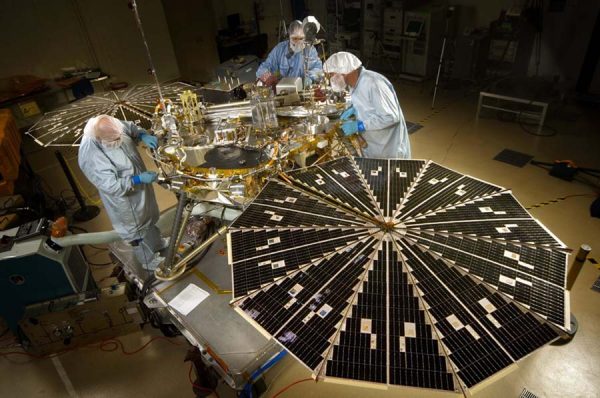
Solar Arrays
Northrop Grumman is the industry leader for design, development and production of a variety of unique turnkey solar array systems. Major products include the PUMA solar array, used on the Global Positioning System and Northrop Grumman's Star-2 GEO family satellites; the unique UltraFlex solar array for civil space programs such as the Orion Multi-Purpose Crew Vehicle and Mars Phoenix; concentrator systems; and electrostatically and/or magnetically clean systems.
Panel Arrays
Our most common platform, the PUMA (Planar Unfolding Modular Array), is a high-heritage, rigid-panel solar array scalable from 200W to over 10kW per wing, suitable for small or large satellites. PUMA arrays benefit from compatibility with all solar cell types, high recurring production rates, and interchangeable standard parts and designs. Many standoff structure options are available for the PUMA array.
UltraFlex
Northrop Grumman invented and flight-qualified the UltraFlex solar array to provide a leap forward in specific power (W/kg) and stowed power density (W/m3) from competing state-of-the-art arrays. Using innovative packaging and deployment methods, the wing stows to a much smaller volume and footprint on the spacecraft. At the same time, the design is inherently stiff and strong in its deployed configuration, due to the efficiency of the tensioned blanket supported by the backbone formed by the stowage panels. In many cases, UltraFlex can enable mission feasibility by these unique performance characteristics. UltraFlex powered the successful Mars Phoenix Lander mission in 2008.
UltraFlex is an accordion fanfold flexible-blanket solar array comprising interconnected, triangular-shaped ultra-lightweight substrates (gores). During deployment, each interconnected gore unfolds and becomes tensioned to form a shallow umbrella-shaped membrane structure. UltraFlex is compatible with all solar cell technologies, including the ultra-lightweight IMM cells anticipated to be ready for flight within the near future.
Concentrators
Northrop Grumman is a leader in photovoltaic concentrator technologies, including the successful demonstration of 7:1 refractive Fresnel concentrator technology aboard NASA's Deep Space 1 (DS-1), as well as the flight tested CellSaver reflective concentrator, which functions at a 2:1 concentration for a direct replacement of 50% of standard PV cells, allowing a significant mass and cost reduction for virtually any solar array system. In addition to these flight-proven optical concentrators, Northrop Grumman is currently developing high (100:1) optical concentration solar arrays for NASA to provide affordable, high-performance solar power suitable for missions to distant and/or harsh radiation environments such as Jupiter.

Propellants Tanks
Northrop Grumman is the world's leading producer of titanium propellant tanks used in government, scientific and commercial satellites, launch vehicles, and space explorers, with more than 600 designs qualified and more than 6,400 tanks delivered. The tanks have been a part of nearly every large U.S. launch vehicle and geosynchronous earth-orbit satellite, with 100 percent reliability.
Northrop Grumman propellant tanks have landed on Mars, Venus and the Moon, and have visited every planet in the solar system. They have been an integral part of nearly every major space-exploration vehicle, including Cassini, Mariner, Pioneer, and Voyager. Launch vehicles with Northrop Grumman tanks have included Delta III and Delta IV, the space shuttle and the entire Atlas family of vehicles.
Northrop Grumman’s capabilities include design, manufacture, and testing of propellant and pressurant tanks such as pressure management (PMD) tanks, diaphragm tanks, pressurant tanks and motor cases.
Electrostatic Clean Solar Array Systems
Northrop Grumman has provided electrostatic and magnetically clean solar array panels for several spacecraft including the Themis constellation and C/NOFS. These unique spacecraft components use a fully conductive surface to provide less than 1V of surface charging potential and less than 0.1mA-m2 to prevent interference with scientific instruments.
Extendible Support Structures
Stiff and stable deployment of large sensors is best accomplished with a purpose-built folding truss, and Northrop Grumman is a world leader in producing such systems.
For example, we were selected by Ball Aerospace to design and build the Reflector Deployment Assembly for the Global Precipitation Measurement Microwave Imager. The RDA is a folding, statically determinate hexapod truss used to support a 1.2-meter-diameter reflector dish.
Our RDA structure exceeded the stringent requirements for placement repeatability (less than 0.001 inches, 3-sigma, more than 10 deployments) and thermal stability (less than 0.01 inches and 18 arcsec each axis over each orbit). Deployment is powered and controlled by a robust spring/damper drive unit that, once deployed, does not apply loading to the structure to ensure the final reflector position is driven entirely by the precision of the folding struts.
Northrop Grumman also produced the Extendible Support Structure for the RADARSAT-2 mission for MDA and the Canadian Space Agency. The structure is currently in service in a wide variety of roles, including sea-ice identification and ship routing, iceberg detection, agricultural crop monitoring, marine surveillance for ship and pollution detection, terrestrial defense surveillance and target identification, and surface mapping.
Performance Features
- Linear, preloaded structures
- Sub-millimeter deployment precision and stability
- Active or passive fully controlled deployments
- Predictable, deterministic structures
- Passive compensation of satellite or bus distortion
Application Benefits
- Ideal for 1 m2 to 100 m2 structures
- Motor- or spring-driven deployment
- On-orbit retraction capability
- Performance validated at subscale level
Thermal Technologies
Northrop Grumman is the world's leader in two-phase thermal management of spacecraft and has more than 30 years of experience designing and manufacturing space-qualified products for various government, military and commercial customers. By combining engineering expertise in thermal and structural design with hardware fabrication, we provide leading-edge thermal-management solutions not only to the aerospace community but also to customers for terrestrial cooling communication electronics.
The company works closely with engineering experts, customer staff and vendors to provide a systems-oriented, multidisciplinary approach to successfully meet customers' needs, whether those needs are for design-to-performance or build-to-print programs.
Capabilities include design, manufacture, testing and integration of complete two-phase thermal-control systems such as heat pipes (-260 C to +175 C); heat pipe radiators and structural equipment panels; two-phase-loop heat pipes (LHPs); deployable radiator assemblies; phase-change materials (PCM); multi-layer insulation (MLI) blankets; thermal preparation; cryogenic cooling applications; and composite structures.
Facilities and resources include 105,000 square feet of engineering and manufacturing space featuring flight-certified integrated assembly areas, processing ovens, thermal vacuum chambers, large environmental chambers, paint booths and full machining and inspection capabilities.